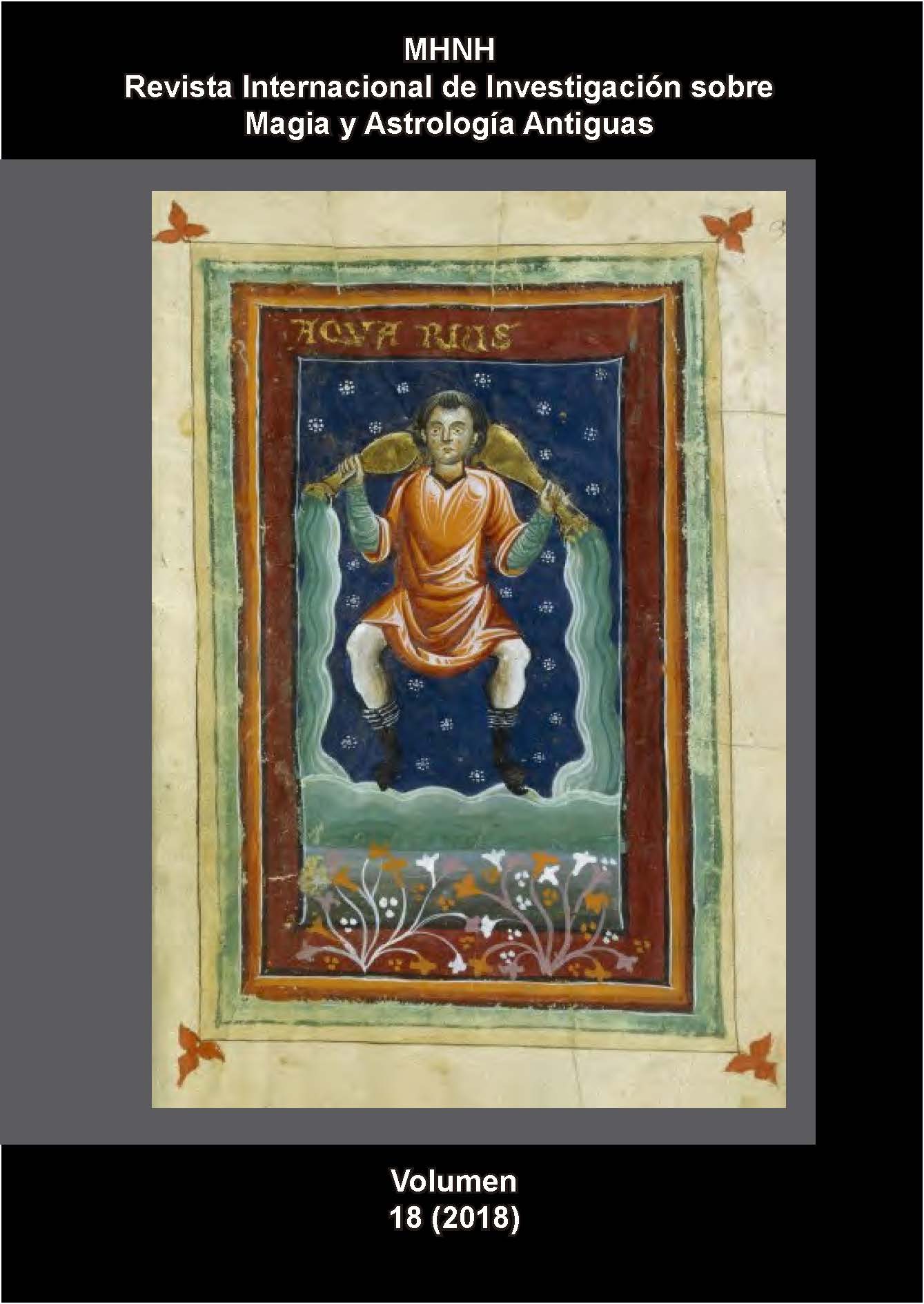Reflejado en el Cielo: Evidencia Bíblica y Romana de un Motivo Compartido en la Antigüedad, sobre los Rasgos Materiales de la Metrópolis del Pueblo Elegido Reflejada en una Constelación Celeste. Primera Parte: Cassiopeia en Isaiah 49:16; la Jerusalén Cele
DOI:
https://doi.org/10.24310/mhnh.vi18.15777Resumen
Hipótesis de la literatura culta referidas a temas textuales concretos — en particular la interpretación rabínica en el medievo temprano (y en 1982, de Wiesenberg) de los muros de Jerusalén como si estuvieran grabados en las palmas de las manos de Dios, en el sentido de que Jerusalén siempre está en Su pensamiento (Isaías 49:16) en relación con la constelación de Casiopea (cf. al-Kaff ‘la palma de la mano’ en árabe); y la propuesta de Vinci y Maiuri de que la adscripción de solamente siete colinas en Roma dentro del muro servio y el verdadero plan de estos muros fueron entendidos por ellos como respondiendo al número de estrellas de las Pléyades, así como la disposición respectivamente de estas colinas y las estrellas, con la colina del Palatino coincidiendo con la estrella Maya (cuyo nombre se convirtió en un tabú, bajo pena de muerte, en el contexto de referencia a la fundación de Roma) — se analizan en conjunto aquí y en una Segunda Parte. Observamos que a propósito de esto en la Antigüedad hubo algún motivo por el que un pueblo debió considerar que su metrópolis (su orografía en el caso de Roma y los muros de la ciudad en el de Jerusalén) estaría reflejada en los cielos en una constelación. Esta idea fue reconfortante, en
cuanto que la ciudad eterna duraría tanto como el firmamento (de hecho una expresión bíblica). Cf. el motivo de la Jerusalén celeste que corresponde a la Jerusalén terrenal; y al lado, el motivo de una ciudad con siete colinas (p.ej., Constantinopla y Jerusalén) desarrollado de modo sorprendente, sobre todo (tal vez exclusivamente) por causa de las siete colinas de Roma. La hipótesis del espejo lunar es una cuestión diferente, en que se creían reflejados en el cielo elementos de la Tierra: aquí (véase la Parte Segunda) un cartógrafo dibujó la punta sur de África con un contorno bifurcado debido a una particularidad de las manchas lunares. En esta Primera Parte discutimos también el motivo de Casiopea en relación con Andrómeda, ella misma un personaje a veces relacionado con la Reina de Saba (que por su parte tiene que ver con la diablesa Onoskelis). Andrómeda en las Etiópicas de Heliodoro, en una etiología genética, influyó al parecer en un cuento rabínico.
Descargas
Métricas

Descargas
Publicado
Cómo citar
Número
Sección
Licencia

Esta obra está bajo licencia internacional Creative Commons Reconocimiento-NoComercial-SinObrasDerivadas 4.0.
Todos los contenidos publicados en MHNH. Revista Internacional de Investigación sobre Magia y Astrología Antiguas están sujetos a la licencia Creative Commons Reconocimento-NoComercia-Compartirigual 4.0 cuyo texto completo puede consultar en <http://creativecommons.org/licenses/by-nc-sa/4.0>
Se pueden copiar, usar, difundir, transmitir y exponer públicamente, siempre que:
- Se cite la autoría y la fuente original de su publicación (revista, editorial y URL de la obra).
- No se usen para fines comerciales.
- Se mencione la existencia y especificaciones de esta licencia de uso.
Los derechos de autor son de dos clases: morales y patrimoniales. Los derechos morales son prerrogativas perpetuas, irrenunciables, intransferibles, inalienables, inembargables e imprescriptibles. De acuerdo con la legislación de derechos de autor, MHNH. Revista Internacional de Investigación sobre Magia y Astrología Antiguas reconoce y respeta el derecho moral de los autores/as, así como la titularidad del derecho patrimonial, el cual será cedido a la Universidad de Málaga para su difusión en acceso abierto. Los derechos patrimoniales, se refieren a los beneficios que se obtienen por el uso o divulgación de las obras.MHNH. Revista Internacional de Investigación sobre Magia y Astrología Antiguas se publica en open access y queda autorizada en exclusiva para realizar u autorizar por cualquier medio el uso, distribución, divulgación, reproducción, adaptación, traducción o transformación de la obra.
Es responsabilidad de los autores/as obtener los permisos necesarios de las imágenes que están sujetas a derechos de autor.





